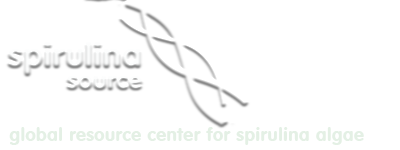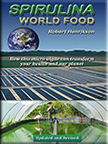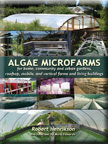REFERENCES AND ABSTRACTS BY HEALTH CATEGORY
Spirulina scientific reference library. Over 100 references covering 45 years of international research.
Click on PDF Download button for free pdf file.
![]() An attempt to induce an immunomodulatory effect in rowers with spirulina extract.
An attempt to induce an immunomodulatory effect in rowers with spirulina extract.
by Artur Juszkiewicz et al. pub in Journal of the International Society of Sports Nutrition (2018) 15:9 https://doi.org/10.1186/s12970-018-0213-3. Poland.
Background: The aim of this study was to analyze the response of selected components of the immune system in rowers to maximal physical exercise, and to verify if this response can be modulated by supplementation with spirulina. The double-blind study included 19 members of the Polish Rowing Team.
Conclusion: The results of this study imply that supplementation with spirulina extract may protect athletes against a deficit in immune function (especially, anti-infectious function) associated with strenuous exercise, and may cause a beneficial shift in “overtraining threshold” preventing a radical deterioration of immunity.
Effects of polysaccharide and phycocyanin from spirulina on peripheral blood and hematopoietic system of bone marrow in mice.
by Zhang Cheng-Wu, et al.. April 1994. Nanjing Univ. China. Pub. in Proc. of Second Asia Pacific Conf. on Algal Biotech. Univ. of Malaysia. p.58. China.
C-phycocyanin and polysaccharide were isolated and purified from spirulina. By using the techniques of colony forming unit-erythroid (CFU-E) culture of fetal liver cells in mice in vitro, C-phycocyanin was found to possess high erythropoietin (EPO) activity. Per 12.5ng C-phycocyanin matched with 850mu EPO. The effects of polysaccharide and phycocyanin on the periphyeral blood and bone marrow hematopoietic stem and progentitor cell in normal, irradiated and anemic mice were studied. These studies demonstrate the unique capacity of C-phycocyanin and polysaccharide to influence the differentation and proliferation of committed hematopoietic progenitor cell. Stimulated recovery by C-phycocyanin and polysaccharide was observed in leukocyte and bone marrow nucleated cell counts and the number of CFU-GM colony formation in mice after single whole-body gamma-ray irradiation. The C-phycocyanin and polysaccharide can lower the anemic degree of mice combined with treatment of gamma-ray irradiation and benzohydrazine hydrochloric acid peritonerl injection.
Enhancement of antibody production in mice by dietary spirulina.
by Hayashi, et al. June 1994. Kagawa Nutrition Univ. Japan. Pub. in Journal of Nutr. Science and Vitaminology. Japan.
Mice fed a spirulina diet showed increased numbers of splenic antibody- producing cells in the primary immune response to sheep red blood cells (SRBC). However, immunoglobulin G (IgG) – antibody production in the secondary immune response was hardly affected. The percentage of phagocytic cells in peritoneal macrophages from the mice fed spirulina diet, as well as the proliferatiom of spleen cells, was significantly increased. Addition of a hot-water extract of spirulina (SHW) to an in vitro culture of spleen cells markedly increased proliferation of these cells, whereas culture of thymus cells was scarcely affected. The spirulina extract also significantly enhanced interleukin-1 (IL-1) production from peritoneal macrophages. Addition to the in vitro spleen cell culture of SHW as well as the supernatant of macrophages stimulated with SHW resulted in enhancement of antibody production, that is, an increase of the number of PFC. These results suggest that spirulina enhances the immune response, particularly the primary response, by stimulating macrophage functions, phagocytosis, and IL-1 production.
Phagocytic potential of feline macrophages after exposure to a water soluble extract of spirulina in vitro.
by M. Qureshi, et al. January 1996. Pub. in Immunopharmacology. in press. USA.
Bronchoalveolar lavage macrophages isolated from cats were cultured on glass coverslips. Macrophages were exposed to a water soluble extract of spirulina platensis in concentration range of 0 to 60 mcg per ml for two hours. Spirulina extract exposure did not cause significant macrophage cytotoxicity over untreated controls. Macrophage monolayers from treated and control cultures were incubated with sheep red blood cells (SRBC) as well as viable e. coli. The percentages of phagocytic macrophages for both of these particular antigens were higher (a two-fold increase in SRBC phagocytosis and over 10% increase in e. coli uptake) in cultures treated with various concentrations of spirulina extract. However, the numbers of either types of particles internalized by phagocytic macrophage were not different between the control and treated cultures. These data which showed that spirulina platensis extract enhances macrophage phagocytic function imply that dietary spirulina supplementation may improve the disease resistance potential in cats.
Spirulina extracts enhances chicken macrophage functions after in vitro exposure.
by M. Qureshi, et al. 1995. Pub. in Jour. Nutritional Immunology, No. 3 (4) 35-45. USA.
The effects of spirulina platensis extract exposure on chicken macrophages were examined. Sephadex-elicited abdominal exudate macrophage monolayers were exposed to varying concentration (10 to 40 mcg/ml) of spirulina for 1 to 16 hours. Spirulina treated macrophages exhibited phenotypic changes in terms of increased spreading and vacuolization with minimal cytotoxicity. Percentage of phagocytic macrophages for unopsonized sheep red blood cells (SRBC) and average number of internalized SRBC was significantly higher in spirulina treated macrophages as compared to the sham treated controls. However, phagocytosis of opsonized SRBC was not effected by spirulina treatment. Macrophage cultures exposed to spirulina produced a factor in their culture supernant with tumorcidal potential which was similar in reactivity to the one produced by macrophages after exposure to lipopolysaccharide. The ability of splenic natural killer cells to kill tumor cell targets was not affected by spirulina treatment. These findings suggest that spirulina exposure enhances selected effector functions of cells of the chicken immune system after in vitro exposure.
Immune enhancement potential of spirulina in chickens.
by M. Qureshi, et al. August 1994. Poultry Science Assoc. Dept. of Poultry Science, North Carolina State, NC. Pub. in Journal of Poultry Science Vol 73, S1. p.46. USA.
Effects of spirulina on the immune function of chickens were examined. Macrophage cultures treated with a water soluble extract of spirulina exhibited enhanced phagocytosis and induced tumorcidal factor secretion. In the second study, 0, 10, 100 and 10,000ppm spirulina in corn/soy diets were fed to Leghorn chickens. Larger thyus glands, higher NK activity and CBH response were observed in the 10,000ppm spirulina treated chickens. Percent phagocytic macrophages and secondary antibody response were also greater than non-treated chickens. The data suggests spirulina exposure improves immune performance of chickens without adversely affecting other performance characteristics.
Immunomodulary effects of spirulina supplementation in chickens.
by M. Qureshi, et al. May 1995. North Carolina State. Pub. in Proc. of 44th Western Poultry Disease Conference, pp 117-120. USA.
Chicken macrophages exposed to a water-soluble spirulina extract show enhanced phagocytic activity in vitro suggesting activation of mononuclear phagocytic system function. Furthermore, dietary supplementation of Spirulina (1,000 ppm to 10,000 ppm) improved thymic weights, enhanced CBH response, increased tumor cell killing by NK cells and doubled the macrophage phagocytic potential over chickens fed a basal diet. Chicks on 1,000 ppm Spirulina diet cleared significantly more E. Coli from circulation at 30 and 40 minutes post i.v. inoculation. Similiar reduction was seen in clearing bacteria from spleen after 80 minutes post i.v. inoculation of Staph. Aureus in chicks fed 10,000 ppm over controls. Chicks in groups from 1,000 ppm to 16,000 ppm Spirulina treatments showed enhanced CBH response. Chicks in 1,000 ppm group exhibited enhanced E. Coli clearance between 30 to 60 minutes and decreased splenic bacterial counts at 80 minutes post inoculation. These studies imply Spirulina enhances several immunological end points in chickens both during in vitro and in in vivo exposures.
Immunostimulating activity of lipopolysaccharides from blue-green algae.
by L. Besednova, et al. 1979. Pub. in Zhurnal Mikrobiologii, Epidemiologii, Immunobiologii, 56(12) pp 75-79. Russia.
The whole cells of blue-green algae and lipopolysaccharides (LPS) isolated from these cells were shown to stimulate the production of macro- and microglobulin anti-bodies in rabbits. The macro- and microphage indices in rabbits increased significantly after the injection of LPS isolated from blue-green algae 24-48 hours before injecting the animals with a virulent Y. pseudotuberculosis strain. Besides, the inhibiting action of this strain on the migration of phagocytes to the site of infection was abolished immediately after the injection. The use of the indirect hemaglutination test allowed to provide the absence of close antigenic interrelations between blue-green algae and the following organisms: Spirulina platensis, Microcystis aeruginosa, Phormidium africanum and P. uniccinatum.
Means to normalize the levels of immunoglobulin E, using the food supplement Spirulina.
by L. Evets, et al. 1994. Grodenski State Medical Univ. Russian Federation Committee of Patents and Trade. Patent (19)RU (11)2005486. Jan. 15, 1994. Russia.
Immunoglobulin E (IgE) of children living in highly radioactive areas is greatly above normal. Studies with 270 children show that consuming about 5 grams per day of spirulina tablets normalized IgE within 6 weeks. Children not consuming spirulina did not change IgE levels. No side effects were observed. Spirulina lowers the amount of IgE in the blood, which in turn normalizes and reduces allergies in the body.
Radioprotective effect of extract from spirulina in mouse bone marrow cells studied by using the micronucleus test.
by P. Qishen, Kolman et al. 1989. In Toxicology Letters 48: 165-169. China.
The radioprotective effect of an extract of spirulina was studied using the micronucleus test in polychromatic erthrocytes of bone marrow in mice. The extract caused a significant reduction of the micronucleus frequencies induced by gamma radiation.
Study on effect and mechanism of polysaccharides of spirulina on body immune function improvement.
by G. Baojiang, et al. April 1994. South China Normal Univ. China. Pub. in Proc. of Second Asia Pacific Conf. on Algal Biotech. Univ. of Malaysia. pp 33-38. China.
Polysaccharides of spirulina, at the dosage of 150-300 mg/kg, by injection or taking orally, can increase the phagocyte percentage and phagocytic index of abdominal macrophage, the percentage of T-lymphocyte and haemolysin content in the peripheral blood of mouse. These results demonstrate polysaccharides can improve both the nonspecific function of cellular immunity and the specific humoral immunity. The mechanism seems related to the fact that polysaccharides can enhance reproductive ability of marrowcyte, growth of thymus and spleen, biosynthesis of serum protein, and that polysaccharide can eliminate the inhibition effect of inhibitive circular phosphamide on immune system of body.
Immune response activation in channel catfish ictaluras punctatus fed spirulina enriched artemia.
by B. Portoni et al. 1996. American Fisheries Society Fish Health Section. USA.
The cyanobacteria spirulina is commercially produced for human consumption as well as agricultural feed ingredients. Recently, whole spirulina and cell extracts were found to enhance immunity in animals by increasing phagocytic activity. The purpose of this study was to determine the effect of spirulina enhanced diet on the nonspecific immune response of channel catfish, ictaluras punctatus. The sample population consisted of “young of the year” channel catfish obtained from Fish Producers, Niland, CA. Fish (50/tank) were maintained in glass aquaria equiped with undergravel filters. All fish were fed a diet of Trout Starter Diet (Rangen, Inc) for a month until they were large enough to ingest adult brine shrimp (artemia franciscana). The control diet consisted of adult brine shrimp. The test diet consisted of adult brine shrimp biencapsulated with spirulina. Adult brine shrimp were allowed to feed on dried spirulina powder for 3-4 hours to maximize bioencapsulation. Preliminary studies indicated that channel catfish fed spirulina had an increase in the number of splenic macrophages determined by esterase staining compared to controls. Not only were more macrophages present in the spleen, but also the macrophages appeared activated. Activation determined by morphology on scanning electron microscopy, was characterized by the presence of numerous folds and ruffles. This research was performed on a single population of catfish over a period of months. While data suggests nonspecific immunostimulation elicited by spirulina in the diet, further study on different populations of fish is underway to confirm the preliminary data.




